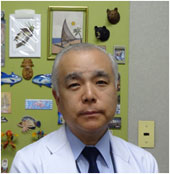- Home
- JLRF Award
- Voices from award winners 2
Voices from award winners 2
Because the world's most successful cord blood bank was established in Japan, it has become feasible to perform transplantations at the best suitable timing for each patient.
 Dr. Shunichi Kato, Professor of Tokai University School of Medicine
Dr. Shunichi Kato, Professor of Tokai University School of Medicine
Voices from award winners
*Dr. Shunichi Kato won the Heisei 14 (2002) Takashi Ogimura Special Award of the Japan Leukemia Research Fund with the research theme, "Basic research on improving the treatment outcomes of cord blood transplantation in leukemia." Dr. Kato successfully performed the very first cord blood transplantation (consanguineous transplant) in Japan. He subsequently strived to establish a cord blood bank aiming to realize cord blood transplantations from unrelated persons, and was the chairperson of the Japan Cord Blood Bank committee. Here is the interview of Dr. Kato
- Dr. Kato explained the theme of the award-winning research.
Back then, cord blood transplantation was only available for low-weighted pediatric patients due to the limited availability of preserved cells. However, the use of cord blood in adult patients was already starting to be investigated since the cord blood has many available preserved cells. To disseminate the cord blood transplant procedure more appropriately across more generations, I was thinking that various kinds of basic research on the number of required cells, transplantation of cord blood from multiple donors, the influence of anti-HLA antibody, etc., are required. The funds provided by the Japan Leukemia Research Fund were used for such basic research, and also to establish the cord blood banking system.
- The cord blood transplantation procedures were initiated in the pediatric field, but have now spread across various patients from all generations.
In August 1999, the Ministry of Health and Welfare (the official body at the time; currently the Ministry of Health, Labour and Welfare) established the Japan Cord Blood Bank consisting of 8 cord blood banks across Japan. It became possible to perform cord blood transplant procedures from unrelated donors mainly in pediatrics. Subsequently, such cord blood transplantation procedures were also attempted in adult patients, leading to the procedures that prevailed across Japan by 2003, and in turn dramatically increased the actual cases of procedures that were performed in adult patients across the country. At the moment the cumulative total of the procedures performed in Japan is over 10,000 cases, which is the largest number in the world.
- What kind of benefit is associated with the cord blood transplantation procedure?
The cord blood transplantation procedure is not prone to an influence of HLA mismatching, since it is different from bone-marrow transplantation, thus transplantable cord blood can be found for over 90% of Japanese patients. Maximum benefit can be obtained if the transplantation procedure is performed without missing the most appropriate timing for each patient, namely, as soon as the transplantation is considered necessary. Another benefit is that the number of GVHD post transplantations is reduced. However, there are fewer cells, disadvantages including engraftment delay or failure may occur. Nevertheless, thanks to the efforts made by cord blood banks across Japan, outcomes that are comparable to bone-marrow transplantation can be accomplished with cord blood transplantation today. When considering cord blood transplantation, more and more doctors now select cord blood transplantation as the very first option.
Through the basic research of this award-winning theme, it has become clear that engraftment tends to be difficult in cases where patients are pregnant or possess anti-HLA antibodies due to blood transfusion, or have specificity against the particular cord blood HLA that will be transplanted. Due to these findings, the anti-HLA antibody tests are covered by health insurance since Heisei 24 (2012). Ever since, it has been possible to perform cord blood transplantations more appropriately.
- Cord blood can offer boundless possibilities in terms of regenerative medicine.
Since cord blood contains an abundance of hemopoietic stem cells, it has been leveraged in hemopoietic stem cell transplantation. In addition, it has become clear that the cord blood contains mesenchymal stem cells that can become either bone, nerves, or vessels, thus boundless possibilities are foreseen in terms of regenerative medicine. I believe that cord blood banks are the treasure boxes that provide the light for the future.
*Behind the fact that leukemia, which used to be an incurable disease, has now became curable lies the existence of enthusiastic and warm-hearted researchers such as Dr. Shunichi Kato, who are determined to eradicate leukemia.

- The Cord Blood Transplantation 20-year-anniversary International Symposium
